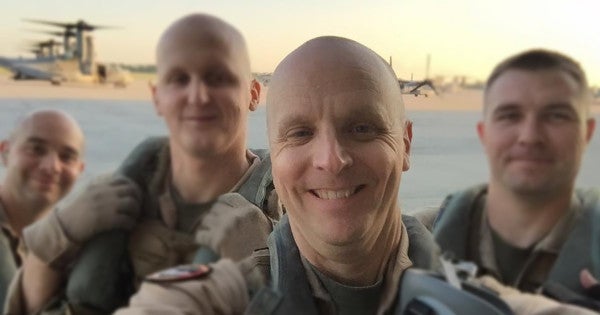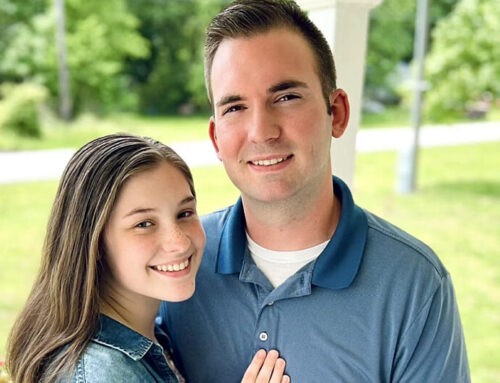BY DAVID ROZA
June 22, 2021
-Task And Purpose
The number of veterans and service members who have died by suicide since Sept. 11, 2001 is more than quadruple the number who have died in Post-9/11 wars, according to a new study released on Monday by Brown University’s Costs of War project. The study estimates that 7,057 service members have been killed in post-9/11 war operations, while 30,177 active duty service members and veterans have died by suicide
The 35-page study breaks down how traumatic brain injuries, better medical treatment of wartime injuries, an indifferent civilian public, and the protracted length of the post-9/11 wars have all piled on each other to drive the rate of military and veteran suicide numbers past civilian counterparts. The average suicide rate for post-9/11 veterans between 18 to 34 was 32.3 per 100,000 between 2005 and 2017, but it rose to 45.9 per 100,000 in 2018. That’s about 2.5 times the suicide rate of that of the general population, which is 18 per 100,000.
Those factors unique to post-9/11 war and society occur on top of many other military factors that may lead to suicidal ideation, such as exposure to war-time trauma; military sexual trauma; the military’s historical disapproval of self-help; its emphasis on individual moral responsibility; and ownership of guns among veterans, wrote the study author, Thomas Howard Suitt, a Ph.D candidate in religion at Boston University.
“This trend is deeply alarming,” Suitt wrote. “The increasing rates of suicide for both veterans and active duty personnel are outpacing those of the general population, marking a significant shift.”
The trend “marks a failure by the military and U.S. society to manage the mental health cost of our current conflicts,” Suitt added.
The cost is laid out in painstaking detail in the study, lending statistical evidence to the personal stories felt by countless service members, veterans, family members and friends who know the faces behind the numbers. Those faces include Marine Lt. Col. Brett A. Hart, a well-respected helicopter and MV-22B Osprey pilot who was just days from retirement after 30 years of service when he was found dead at Marine Corps Air Station Yuma on April 19, 2019.
“Brett was one of the people that was so with it, he would be the guy I would call for advice,” said fellow Marine aviator and former Task & Purpose columnist Carl Forsling. “I can’t figure out why he would do this.”
Another face was Cpl. Seth Smith, a 28-year-old Marine who deployed to Iraq in 2009 for nine months. He served honorably for four years and was discharged in December 2010. He died in April 2011 and left behind a fiancée and a son named Carter. Nearly 70 percent of veterans reported knowing a post-9/11 veteran who had attempted suicide, and 62 percent said they knew a post-9/11 veteran who died by suicide, according to a 2020 survey by Iraq and Afghanistan Veterans of America.
The Cost of War study comes at a time when news of military and veteran suicide numbers continues to go from bad to worse. For example, last fall, a DoD report showed that the overall rate of deaths by suicide across the services rose from 20.2 deaths per 100,000 in 2015 to 25.9 in 2019. More recent reporting shows that the number of active duty service members who died by suicide rose for the fourth year in a row in 2020, and the number of reservists who died by suicide also rose.
What’s driving the troubling rise in military suicide
Video: How Marine Corps veteran Kirstie Ennis came back from an attempted suicide attempt
Amid the terrible news, Monday’s report sheds light on specific reasons why the numbers are getting worse. Specifically, Suitt calls attention to the role of improvised explosive devices, which lead to large numbers of traumatic brain injuries among service members. TBIs have affected as many as one in five post-9/11 service members and are called the “signature injury” of the Iraq and Afghanistan conflicts, Suitt wrote.
Many service members experienced multiple TBIs over the course of their tours, and these have “a strong association with increases in suicidal ideation and behaviors and a propensity towards violence,” Suitt wrote.
The other threat posed by IEDs is that they are unseen, and their persistent use “contributes to a constant state of fear and vulnerability, increasing ‘operational stress burden,’” the study says.
There’s an association here: suicidal behaviors rose by 26 percent among service members for every additional 1,000 IEDs encountered per month, according to a 2017 Army study. But better medical treatment and a small volunteer force means that those service members who suffer TBIs from IEDs often redeploy repeatedly, which increases their risk of exposure to more TBIs and traumatic experiences. One service member who took part in a 2009 study of troops in Iraq had 18 TBIs, Suitt said, and the average among 150 soldiers was two TBIs.
Russell Worth Parker was one service member who suffered more than his fair share of TBIs. A retired Marine Corps special operations officer, Parker sustained 17 such injuries from everything from blast exposure to hard helicopter landings, and those injuries may shape how he spends the rest of his life.
“I was chronically tired, in pain from my injuries, and subconsciously angry and depressed about it all,” Parker wrote in a personal essay published by Task & Purpose in May. “By 2019, it had been 15 years since I had slept normally. Three to four-hour nights of broken sleep were not uncommon.”
On top of IEDs and TBIs are the attitudes service members face from society when they get back from war. Vietnam veterans were called baby-killers and treated with hostility, but a 2018 poll found that about 42 percent of American voters were either unaware of the continuing conflicts in the Middle East, or were convinced that the War on Terror was over.
“Such a realization must make the reality of fighting a war on behalf of an uncaring public difficult,” Suitt wrote.
Suitt noted that civilians often respond to veterans by either profusely thanking them for their service or by thinking that they are psychologically broken and prone to violence. To emphasize that point, just last week the Cohen Veterans Network found that a quarter of survey respondents felt that the majority of people with post-traumatic stress disorder are violent or dangerous and that 23 percent said they thought PTSD was not treatable.
“If there is something novel to the Global War on Terror, it may be the diminishing approval and ignorance of the public coupled with persistent veteran stereotypes, which further alienate them from civilian society,” Suitt wrote.
The author also goes on to lay out all the elements of war and military life that would drive suicide rates even without the added challenges of TBIs, multiple deployments, and an uncaring public. These include military sexual trauma; exposure to combat trauma; the lasting changes to the brain caused by post-traumatic stress; the high-tempo of military life; the historical lack of respect for mental health treatment in the military; and the sense of moral injury that stems from traumatic experiences in war or in the institution of the military.
“While we know between 11 and 20 percent of veterans are diagnosed with PTSD each year, research shows a strong correlation between moral injury symptoms and a PTSD diagnosis, with 90 percent of veterans with PTSD having at least one significant symptom of moral injury,” Suitt wrote.
However, one needn’t see combat to be at a greater risk of suicide, Suitt said.
“Nondeployed troops have an even higher risk of suicide, and it is not clear why,” he wrote. But it is clear that, between military sexual trauma, the high-tempo of military life, and the difficulties of the military as an institution mean that service members can go through terrible experiences without ever being shot at.
One sailor put it much more succinctly: “Anytime you are involved in the military, you are connected to something that is constantly doing both ill and good,” the anonymous sailor told Suitt. “It’s just inevitable. There is enough moral stain in the mix that, just by joining, you are going to come out stained.”
Suitt also highlighted “the military’s reliance on guiding principles which overburden individual service members with moral responsibility, or blameworthiness for actions or consequences, over which they have little control,” as another factor contributing to veterans’ poor mental health after leaving the military.
“When Dave and Adrian died instead of me, my commander and gunner killed by an IED, I blamed myself for years,” Army veteran Bryan Box wrote in a 2019 essay for The New Republic. Box wrote that working in ecology in the Wisconsin forests helped him work on his Afghanistan war ghosts. “It feels good to help yellow birch come back as a major component of the forest,” he said.
The saddest part of the report may be the fact that its figures of suicide deaths are very likely underestimates. The Department of Veterans Affairs has inconsistently measured suicides since 2001 and has yet to report the actual number of post-9/11 veterans who have committed suicide, Suitt wrote. The Department of Defense also has a history of under-reporting such numbers, he said.
It’s not that Department of Defense or Department of Veteran Affairs have done nothing to address suicide in the ranks. In fact, they have tried everything from an anti-depression nasal spray to virtual reality-based suicide prevention training, and tens of billions of dollars’ worth of suicide prevention and resiliency programs across both agencies. While these programs are a step in the right direction, they are not adequately addressing the program, Suitt said.
More profound and effective changes would include ending the post-9/11 wars; promoting help-seeking attitudes and framing them positively; universal medical screening for PTSD, TBIs, depression and suicidal ideation; putting limits on redeployments; significantly expanding dwell time between deployments; taking moral injuries, military sexual trauma and other traumas outside war more seriously; and better helping veterans navigate the psychological transition out of the military, Suitt wrote.
“Unless the U.S. government and U.S. society makes significant changes in the ways we manage the mental health crisis among our service members and veterans, suicide rates will continue to climb,” he said. “That is a cost of war we cannot accept.”




